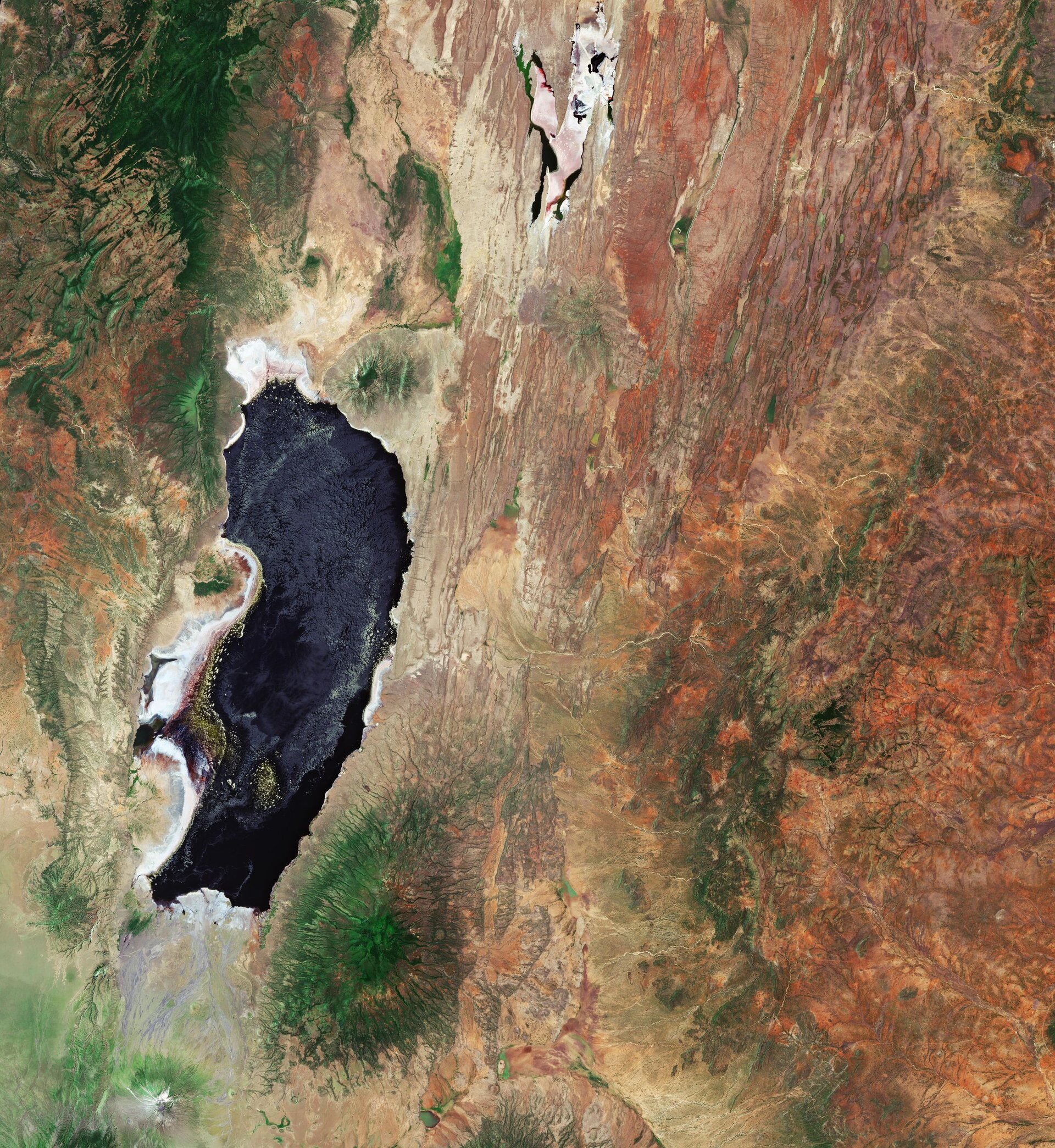

2, 2013— - The Dead Sea may be one of the saltiest lakes on earth, but at least it doesn't turn animals to husks of their former selves. The animals are all arranged in poses by the photographer, for a more dramatic effect.Oct.

The amazing photos of Lake Natron’s calcified animals, as well as other photographs taken in Eastern Africa are included in Nick Brandt’s latest book, Across the Ravaged Land. I took these creatures as I found them on the shoreline, and then placed them in ‘living’ positions, bringing them back to ‘life’, as it were. The soda and salt causes the creatures to calcify, perfectly preserved, as they dry. The water has an extremely high soda and salt content, so high that it would strip the ink off my Kodak film boxes within a few seconds. No-one knows for certain exactly how they die, but it appears that the extreme reflective nature of the lake’s surface confuses them, and like birds crashing into plate glass windows, they crash into the lake. “I unexpectedly found the creatures – all manner of birds and bats – washed up along the shoreline of Lake Natron in Northern Tanzania. “The notion of portraits of dead animals in the place where they once lived is what also drew me to photographing the creatures in the Calcified series,” Brandt explains. Only invertebrates, a few algae invertebrates and some fish that live near the edges of the lake can survive this environment. Flamingos sometime use the predator-free salt islands that sometimes form on the lake for nesting, but it’s a risky gamble, as the photos below clearly show. As soon as birds and bats plunge into the waters of lake Natron, the minerals start turning their flesh into stone and preserving them exactly as they were in their final moments. No animal can withstand this caustic environment and venturing into the alkaline environment is usually fatal. The lake’s alkalinity is similar to that of ammonia, with a pH between 9 and 10.5, and the temperature of the water can reach 60 ☌. It’s the same mineral the Egyptians used to preserve their mummies. Natron, which gives the lake its name, is a naturally occurring compound found in volcanic ash.


 0 kommentar(er)
0 kommentar(er)
